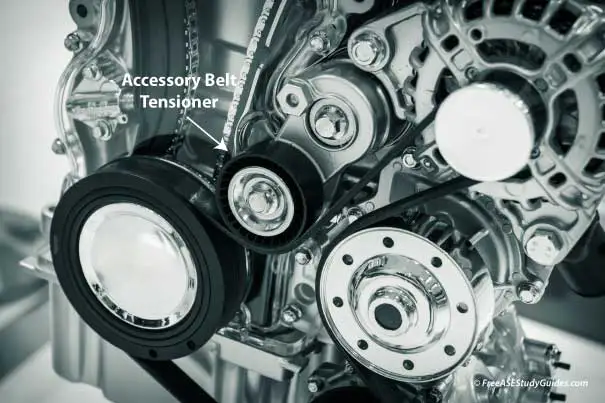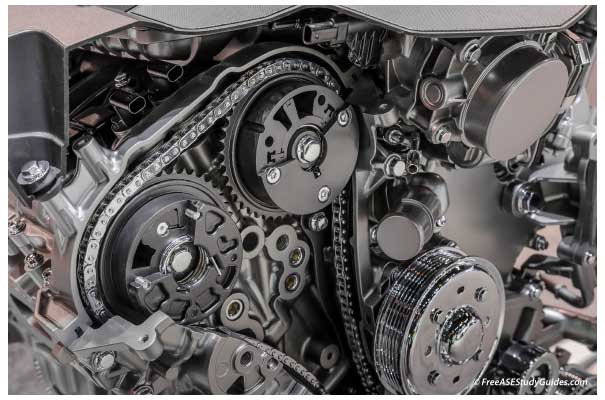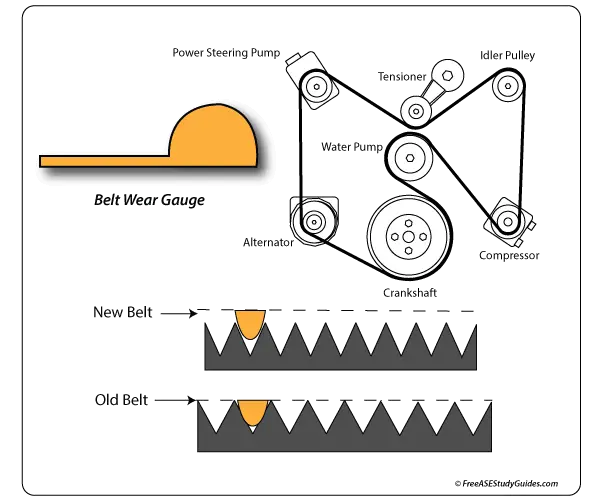The Accessory Belt

Serpentine and V-belts are neoprene or EPDM. EPDM belts have more elasticity, and an accessory belt wear gauge may be necessary to indicate wear accurately. The accessory belt serpentines around the pulleys, and glazing and material wear can appear on both sides.

The belt tensioner and idler pulleys contain bearings that can squeak or seize, causing the belt to break. A listening device like a stethoscope may be required to locate the faulty bearing.

If the engine is smooth and the noise goes away after removing the accessory belt and starting the engine, the problem is in the accessory belt system; if it's still there, the problem is internal, most likely the timing belt or chain. Again, check with the manufacturer for TSBs or any special procedures before proceeding.

Inspect the belt at a point like the water pump pulley above for cracks and excessively worn edges. Misalignment of a pulley will result in excessive wear on the edge of the belt. This misalignment is common after power steering pump replacement. Also, check for loose mounting, causing the pulley to become misaligned with the rest of the accessory drive belt system.